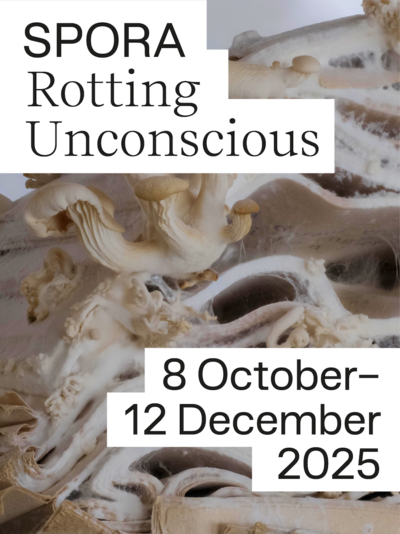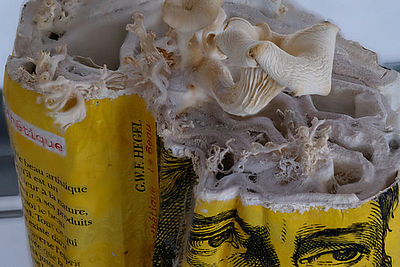Welcome at the Interface Culture program website.
Acting as creative artists and researchers, students learn how to advance the state of the art of current interface technologies and applications. Through interdisciplinary research and team work, they also develop new aspects of interface design including its cultural and social applications. The themes elaborated under the Master's programme in relation to interactive technologies include Interactive Environments, Interactive Art, Ubiquitous Computing, game design, VR and MR environments, Sound Art, Media Art, Web-Art, Software Art, HCI research and interaction design.

The Interface Culture program at the Linz University of Arts Department of Media was founded in 2004 by Christa Sommerer and Laurent Mignonneau. The program teaches students of human-machine interaction to develop innovative interfaces that harness new interface technologies at the confluence of art, research, application and design, and to investigate the cultural and social possibilities of implementing them.
The term "interface" is omnipresent nowadays. Basically, it describes an intersection or linkage between different computer systems that makes use of hardware components and software programs to enable the exchange and transmission of digital information via communications protocols.
However, an interface also describes the hook-up between human and machine, whereby the human qua user undertakes interaction as a means of operating and influencing the software and hardware components of a digital system. An interface thus enables human beings to communicate with digital technologies as well as to generate, receive and exchange data. Examples of interfaces in very widespread use are the mouse-keyboard interface and graphical user interfaces (i.e. desktop metaphors). In recent years, though, we have witnessed rapid developments in the direction of more intuitive and more seamless interface designs; the fields of research that have emerged include ubiquitous computing, intelligent environments, tangible user interfaces, auditory interfaces, VR-based and MR-based interaction, multi-modal interaction (camera-based interaction, voice-driven interaction, gesture-based interaction), robotic interfaces, natural interfaces and artistic and metaphoric interfaces.
Artists in the field of interactive art have been conducting research on human-machine interaction for a number of years now. By means of artistic, intuitive, conceptual, social and critical forms of interaction design, they have shown how digital processes can become essential elements of the artistic process.
Ars Electronica and in particular the Prix Ars Electronica's Interactive Art category launched in 1991 has had a powerful impact on this dialog and played an active role in promoting ongoing development in this field of research.
The Interface Cultures program is based upon this know-how. It is an artistic-scientific course of study to give budding media artists and media theoreticians solid training in creative and innovative interface design. Artistic design in these areas includes interactive art, netart, software art, robotic art, soundart, noiseart, games & storytelling and mobile art, as well as new hybrid fields like genetic art, bioart, spaceart and nanoart.
It is precisely this combination of technical know-how, interdisciplinary research and a creative artistic-scientific approach to a task that makes it possible to develop new, creative interfaces that engender progressive and innovative artistic-creative applications for media art, media design, media research and communication.
SPORA. Rotting Unconscious
8. Oktober bis 12. Dezember 2025 ifk Arkade, Reichsratsstraße 17, 1010 Wien
Ein Projekt des ifk, Internationales Forschungszentrum Kulturwissenschaften | Kunstuniversität Linz in Wien, in Kooperation mit dem Co.Lab Mycelial Space / Sarah Kolb & Jutta Strohmaier.
Im Mittelpunkt des Projekts stehen Bücher, die sich mit dem Thema des Unbewussten befassen.
Sigmund Freud hat bereits im Jahr 1900 die Prozesse der Pilze und der Träume verglichen. Für ihn bleibt das »Gewebe« der Traumgedanken ähnlich wie das unterirdische »Myzel« von Pilzen der intellektuellen Interpretation weitgehend unzugänglich. C. G. Jung erweitert Freuds Metapher auf ein kollektives Unbewusstes, während Gilles Deleuze und Félix Guattari das unbewusste Begehren als rhizomatische Vielfalt kartografieren. Zeitgenössische feministische und ökokritische Autor*innen führen diese Linie in Richtung Psychoökologie weiter und betonen, dass die Psyche auch posthumanistische Beziehungen impliziere.
Das interdisziplinäre Kollektiv SPORA, mitbegründet von Charlotte Janis und Roberto Dell’Orco, fügt dieser Geschichte des Unbewussten eine weitere Wendung hinzu, indem sie den unterirdischen Ausstellungsraum des ifk in eine lebendige, verrottende Bibliothek verwandeln. Im Mittelpunkt des Projekts stehen Bücher, die sich mit dem Thema des Unbewussten befassen und buchstäblich von Pilzen, nämlich Pleurotus ostreatus, verdaut und transformiert werden. Im Laufe der Ausstellung werden sich Pilzhyphen durch die Seiten schlängeln und Zellulose, Tinte und Gedanken gleichermaßen neu ordnen – bis entlang der Buchrücken essbare Fruchtkörper sprießen.
ifk.ac.at/kalender-detail/spora-rotting-unconscious
Sie sind herzlich eingeladen, diese spannenden Prozesse zu beobachten und zu begleiten! Wir bitten Sie Bücher einzureichen, die sich mit dem Unbewussten auseinandersetzen – vielleicht mit einer beigelegten Notiz mit Ihren Gedanken zum Thema. Zudem können Sie in Workshops aktiv an der Transformation Ihrer Bücher teilhaben.
www.mycelial-space.net/call-for-books-rotting-unconscious-2025
Wir freuen uns über Buchspenden, die bis zum 20. September 2025 an folgende Adresse geschickt werden:
ROTTING UNCONSCIOUS
P.O. Box 0025
Bennogasse 1
1080 Wien
Österreich
Wir sehen uns ab dem 8. Oktober 2025 in der ifk Arkade, wo Sie Ihrem Buch beim Wachsen zusehen können – und es vielleicht sogar kosten!

